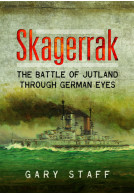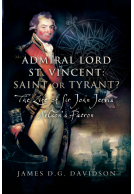Japanese Carriers and Victory in the Pacific (Hardback)
The Yamamoto Option
Imprint: Pen & Sword Maritime
Pages: 248
Illustrations: 57 black and white illustrations
ISBN: 9781399010115
Published: 9th December 2021
(click here for international delivery rates)
Order within the next 42 minutes to get your order processed the next working day!
Need a currency converter? Check XE.com for live rates
| Other formats available - Buy the Hardback and get the eBook for £1.99! | Price |
|---|---|
| Japanese Carriers and Victory… eBook (21.5 MB) Add to Basket | £6.99 |
Japanese Carriers and Victory in the Pacific focuses on the pre-war debate between building a new generation of super-battleships or adopting aircraft carriers as the ‘capital ships’ of the future. An Asian power in particular sees carriers as a way of challenging the USA and the colonial empires initially losing the contest yet coming out all right in the Cold War aftermath.
Martin Stansfeld examines the much overlooked genesis of Japan’s so-called shadow fleet that was a secret attempt to bring about parity with the US in carriers -- albeit only with slower speed conversions of liners and auxiliaries but along with the super-battleships cluttered launch facilities when these could have been devoted to keel-up fast fleet carrier production.
This first analytical look at what major launch facilities were available in Japan shows that the Imperial Japanese Navy could have doubled its fast carrier fleet thereby able to give sufficient air cover for an invasion of Hawaii rather than just the raid on Pearl Harbor, but only providing nobody noticed they were building all these carriers. This is shown to have been entirely possible given the IJN’s extraordinary success at covering up their super-battleship and shadow fleet production. This secret fast carrier fleet programme is given the name ’phantom fleet’ by Stansfeld who proceeds to demonstrate how the strategy of the Pacific War would have been transformed. Weaving through the chapters is an exotic cast of characters led most notably by Admiral Isoroku Yamamoto, the conceiver of Pearl Harbor and a figure of mythic status to Japanese today and famous around the world thanks to the movies. Stansfeld dwells on the ironies of war, notably how, without the ‘day that will live in infamy’, America might never have become the worldwide super-power it is today.
As featured in
Warship Annual - 2023
"It makes you think....by all means investigate it".
The Naval Review
"Stansfeld has penned a very intriguing alternative to the Pacific War and I recommend it to any Pacific War student."
Against the Odds Magazine
As featured in
The Armourer
As featured on Beating Tsundoku
Beating Tsundoku
This new study (2021) considers in considerable detail an alternative history regarding the Japanese approach to war in the 1930s and 1940s. If the Japanese had spent more resources on building carriers rather than battleships would they have been better placed to fight the war that they fought in 1941? Did they have the capacity to build such carriers, did they have the planes and pilots to arm them properly? As such Japanese Carriers and Victory in the Pacific is very much for those deeply interested in the Pacific War.
WW2 Today
The author ranges far and wide in his considerations of Japanese military capabilities with particular attention to the underlying philosophies that drove the Japanese Navy, not least the influence of Yamamoto.
Read the full review here
As featured in
Ships Monthly
As featured in
The Armourer
"Highly recommended."
Roger Coleman, The Wessex Branch of the Western Front Association
What a really interesting read. The book is not just about Japanese carriers during WW2, it’s much more than that in that the book looks at how the Japanese could have fared better against the United States had things been different or gone another way in history. I enjoyed this book greatly and it was very well written by the author Martin Stansfeld and would happily recommend this book to anyone interested in this part of the war.
UK Historian
Read the full review here
A very interesting and unique book. It is far more than a history of the role of Japanese carriers in World War Two, Where the book really shines is in its analysis of how the Japanese could have potentially prevailed against the United States if it had made different decisions as to what ships to construct before and during the war.
NetGalley, Sandra Hood
This book made me think outside the box and for that I thank the author, Martin Stansfeld.
Clash of Steel
I think the book would make a good jump off point for further study and/or speculation into what might have been had the Empire put its materials into the support of its air assets rather than outdated fleets largely made up of battleships... There is much food for thought here.
NetGalley, William Harris
Rating: 5 out of 5 stars
NetGalley, Ron Baumer
An interesting look at the naval war against Japan that provides both real events as well as looking at alternate paths that could have occurred under different circumstances. The plots are thought provoking and could have occurred. Overall, a highly entertaining book for the WW2 enthusiast.
"A good book about a credible and possible way for Japan to avoid defeat in the Pacific war."
Goodreads
Read the review here
About Martin Stansfeld
Martin Stansfeld endured a professional career in public communication in London and in New York as a publicist latterly notably worldwide for Sotheby’s in particular. He was educated at Eton and at Christ Church College, Oxford and graduated in Modern History. For his special subject he chose naval history and the theory of war, which became one of his abiding hobbies thereafter. Gifted as a child with a Janes Fighting Ships annual he was inspired to model the entire Imperial Japanese Navy in plasticine and to scale. Why the IJN? Because their ships looked far sexier than anyone else’s (as seems a choice made by the model ships hobby in more modern time). His other main historical interests have focussed on the transition of the Age of Late Antiquity into the Dark Age, which involved him as leader in Debrett’s Quest for King Arthur (later published by Doubleday) and with Debrett’s the publication of Debrett’s Texas Peerage as editor of Debrett’s American Society series published by Putnam. Following that phase in New York
he returned to his native lowland Scots roots in Angus to look after inherited rural properties and to redevelop them, after habitat enhancement and subsequent management, for future sale; and in the course of that settling in semi-retirement on the Riviera. He is married to Monica originally from Ohio, US. His hobbies are art and antique collecting, salmon fishing, and history reading.














